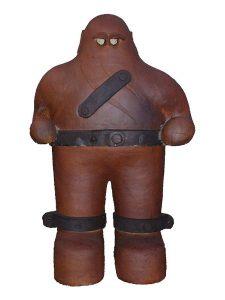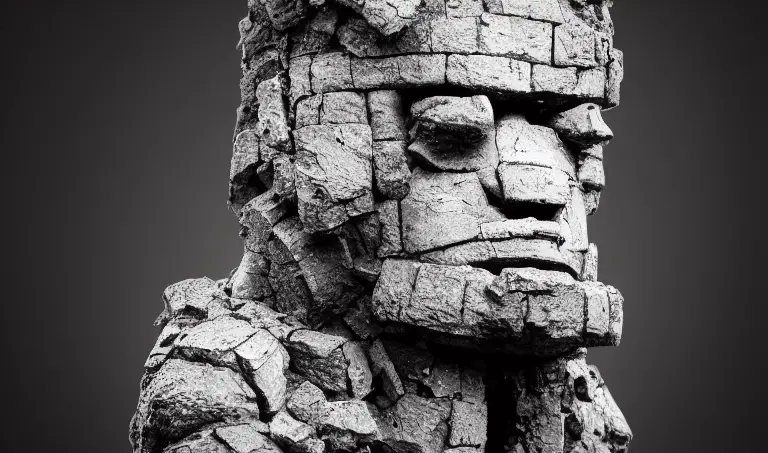Share the Lore!
By: Andrej Jovanovski
How to Create a Golem
Throughout Jewish folklore, one creature can be seen as a protector of riches, places, and even people.
A being created out of clay or stone, given life by magic, golems were considered to be the perfect servants, whose only flaw was that they were too literal.
The only ones who could create golems were the best sculptors assisted by someone knowledgeable in mysticism.
The way golems came to life was by carving one of the many names of God onto their body, or having a piece of paper that contained one of the names which were later placed in the golem’s mouth.
The carvings and paper had to be blessed, which resulted in the golems receiving life from God, which in fact turned them into the best protectors across the world.
However, being made of clay or stone, the golems lacked intelligence which often resulted in them misunderstanding their orders.
For this reason, when a master gave their order to a golem they had to be awfully specific with it, going down to the smallest of details.

From Gentle Giants to Evil Incarnate
As seen, in the beginning, the golems served as gentle giants who protected their masters and the children of the land, yet, this all changed once Christianity rose in popularity.
It didn’t take long for the people to start fearing the golems, seeing them as works of the devil and the dark arts.
A fear that was born through the understanding that only God and the Devil can give life.
And since it required humans to create the bodies and give life to the golems, it was accepted that this was done with the help of the Devil.
With this, the once-beloved and admired golems turned into creatures feared by many, oftentimes resulting in the destruction of a golem.
The perception of the golem changed from protectors into creatures that roam through the lands causing massive destruction mostly due to their sheer size and low intelligence.
This became a commonly accepted fear once rabbi Eliyahu Baal Shem created an ever-growing golem that was believed to cause earthquakes with his footsteps.

Modern Acceptance of the Golems
As technology advanced, the fear of golems has long been left in the past, as they made their way from an everyday threat into part of folklore and myth.
The stories slowly turned into fiction, making their way into the entertainment world where they soon became one of the most beloved creatures.
Throughout many shows and franchises, golems make an appearance where they often have a supportive role, going back to their original function of protecting places. However, these places became the houses of strong sorcerers where the golems protect magical secrets.
The only difference being that now golems appear to be made not only of clay and stone but metal, marble, and other strong materials.
With this, the portrayal of golems has gone full circle, embracing their original purpose and once again becoming the lovable giants they were.
Such portrayals of golems include the DC Comics superheroes Ragman and Monolith, the former being created the same way as golems are created in folklore and the latter being an actual golem created to defend the Jews.
A more famous golem might be considered the golems from the popular video game Minecraft, where they protect the villages from any hostile intruders

Going Back to Their Roots
It’s important to state that although golems were feared during the middle ages, this wasn’t the case in the Jewish religion, since golems have always been respected. To them golems were never thought of as evil creatures that harm people for no reason, rather they were some of the best warriors that protected them.
So in the beginning and all throughout the middle ages, golems were seen as warriors in the eyes of the Jewish religion, doing anything they can in order to protect the people they served.
And although they have such a rich and long history, still a lot of things are not known about the golems.
Misconceptions About Golems
As it is with all things, our fear has led us to believe a lot of misconceptions about our friendly gentle giants.
One misconception is that golems are able to cause earthquakes with their footsteps, which has been shown to be nothing more than a myth created with the sole intention of scaring farmers.
Another common misconception is that to kill a golem you just need to remove the piece of letter that gives them life, and although this will make the golem to be inactive, it will not kill it.
The only way to successfully kill a golem is by placing another piece of paper in their mouth with the word “mét” which translates into “death”.
One of the biggest misconceptions is that golems are capable of doing things on their own. Their low intelligence prohibits them from carrying out complex actions that weren’t ordered, so the whole portrayal of golems as evil incarnate is nothing but a myth, since their masters, or in some cases children, can order the golems to stop with their actions.

Yet to say that we shouldn’t fear the golem is wrong, as their clumsiness and sheer size should always be taken into account since they can cause an incident even without any intentions.
FAQs
Are golems evil?
No, although they can be ordered to commit evil actions, the nature of the golems is to protect their masters.
Can golems think for themselves?
No, golems can only do and think what they are told. Which often results in them being in need of highly detailed orders.
Where do golems come from?
The word golem can be spotted in the Bible in Psalm 139:16, however, here the word translates into raw material.
Do golems possess magical powers?
Although being made with the help of magic, golems do not have any magical powers. They rely on their brute force and sheer strength.
Can golems go rogue?
In folklore, there have been no records of golems going rogue and betraying their masters. The will of the golem is to protect and serve, so for a golem to betray its master is unheard of.
References:
Interpretations of the Golem https://www.myjewishlearning.com/article/interpretations-of-the-golem/, Accessed 8 September 2021 Hard Times Give New Life to Prague’s Golem, New York Times, https://www.nytimes.com/2009/05/11/world/europe/11golem.html, Accessed 9 September 2021 Golem, Jewish folklore https://www.britannica.com/topic/golem-Jewish-folklore, Accessed 9 September 2021
